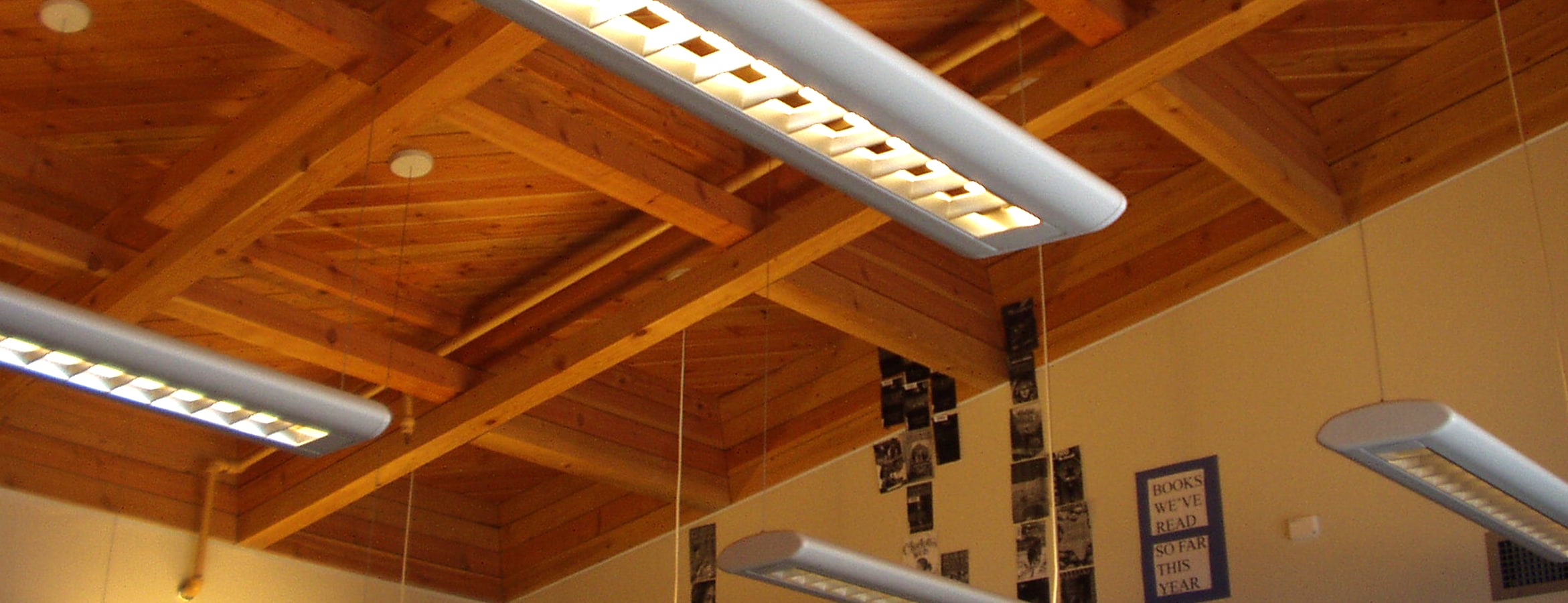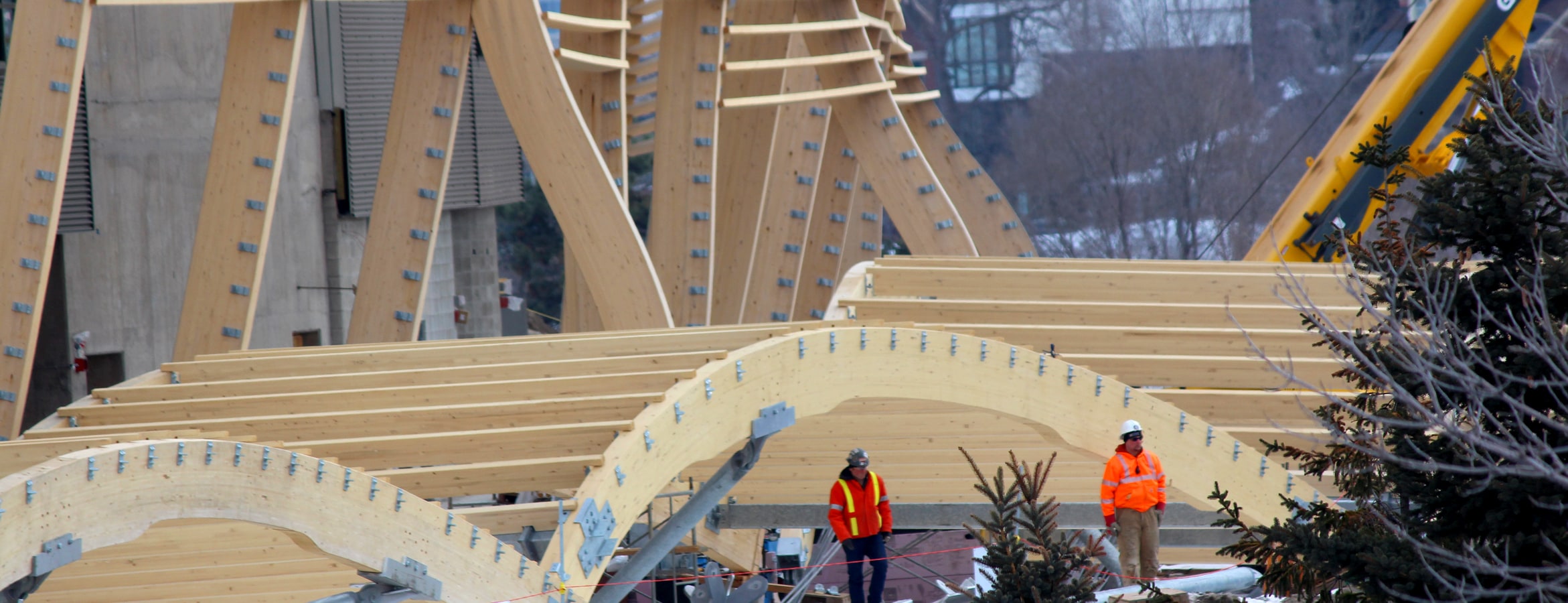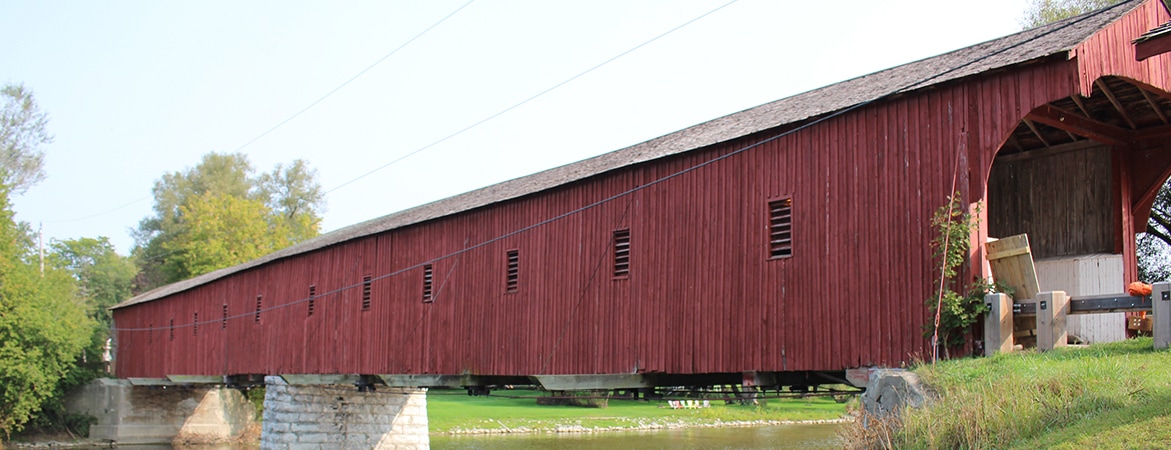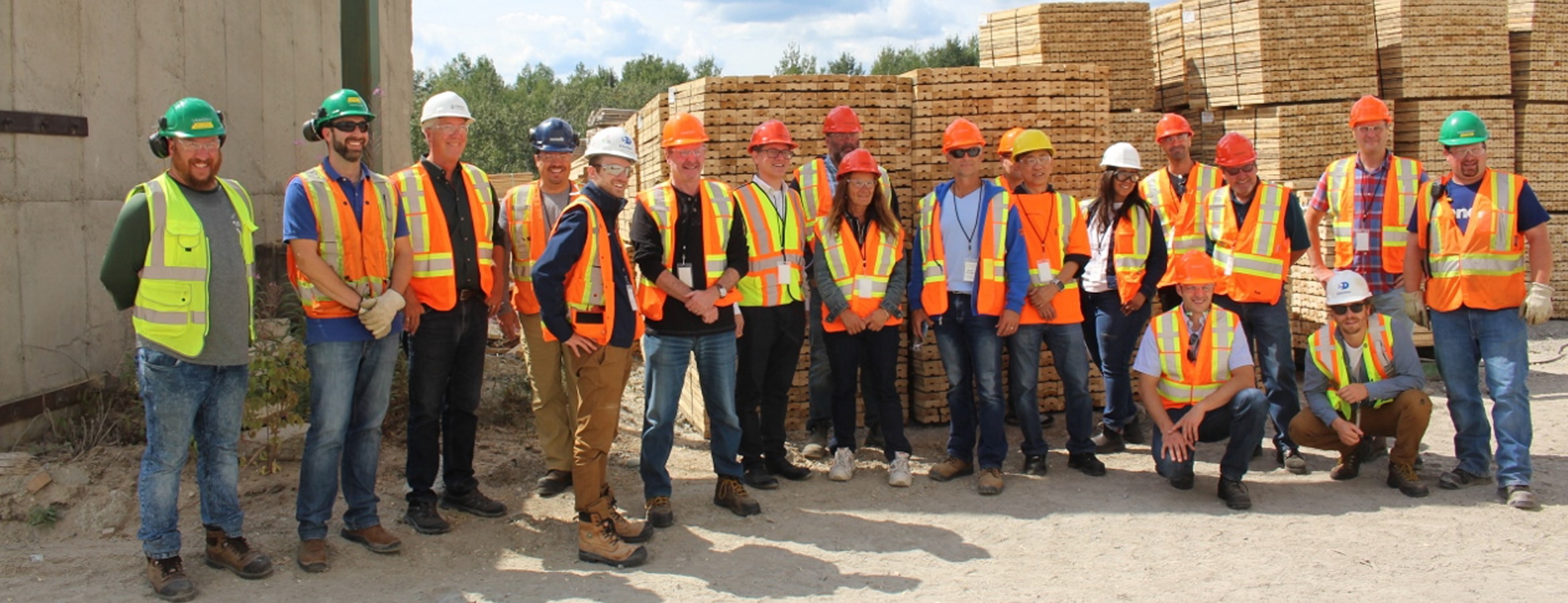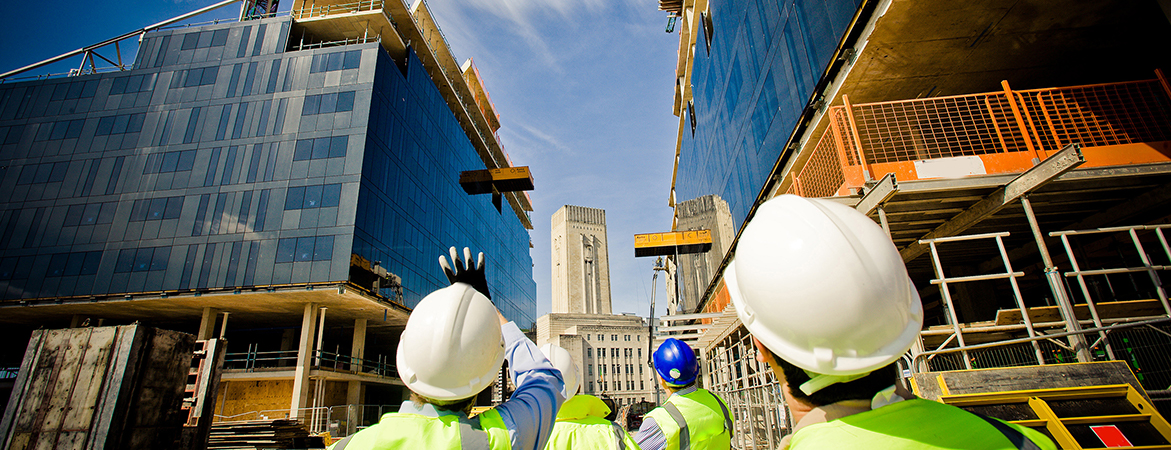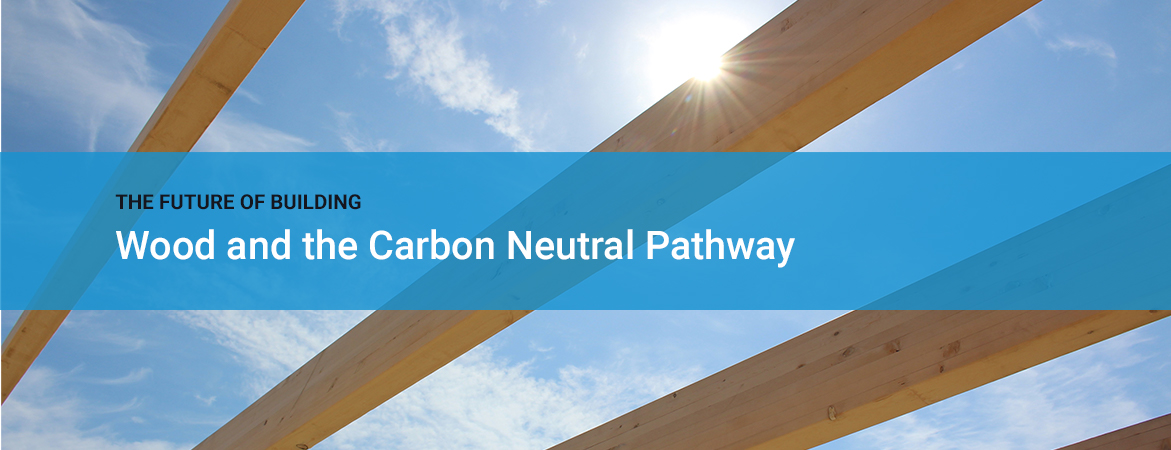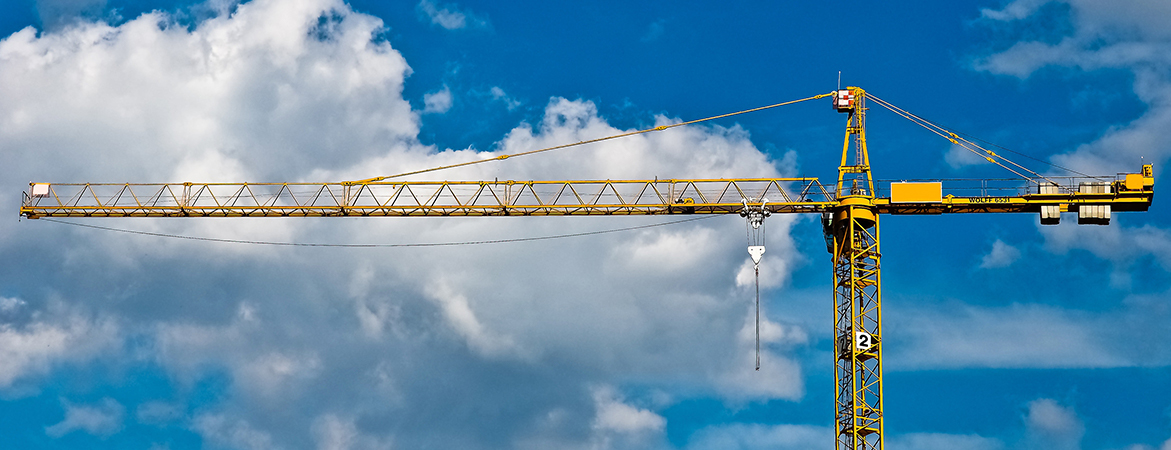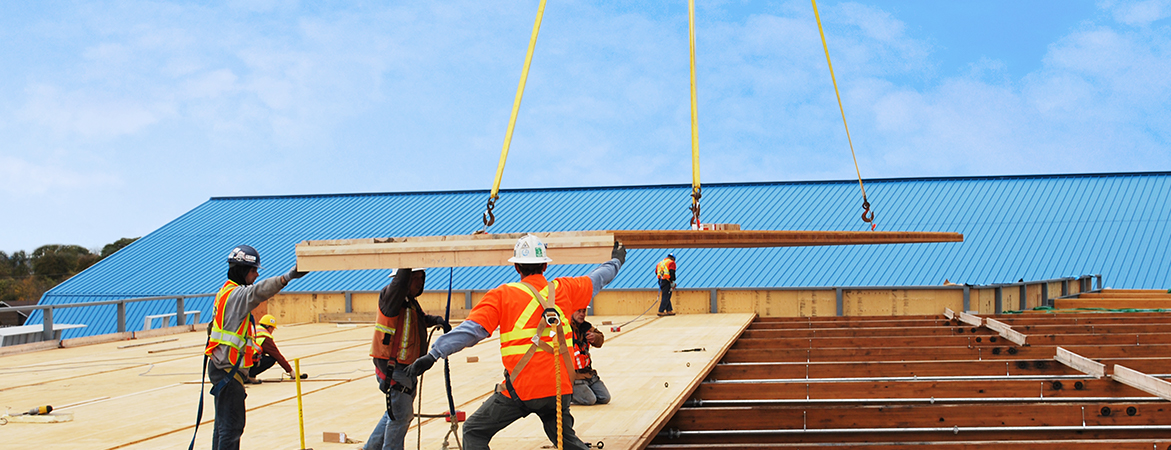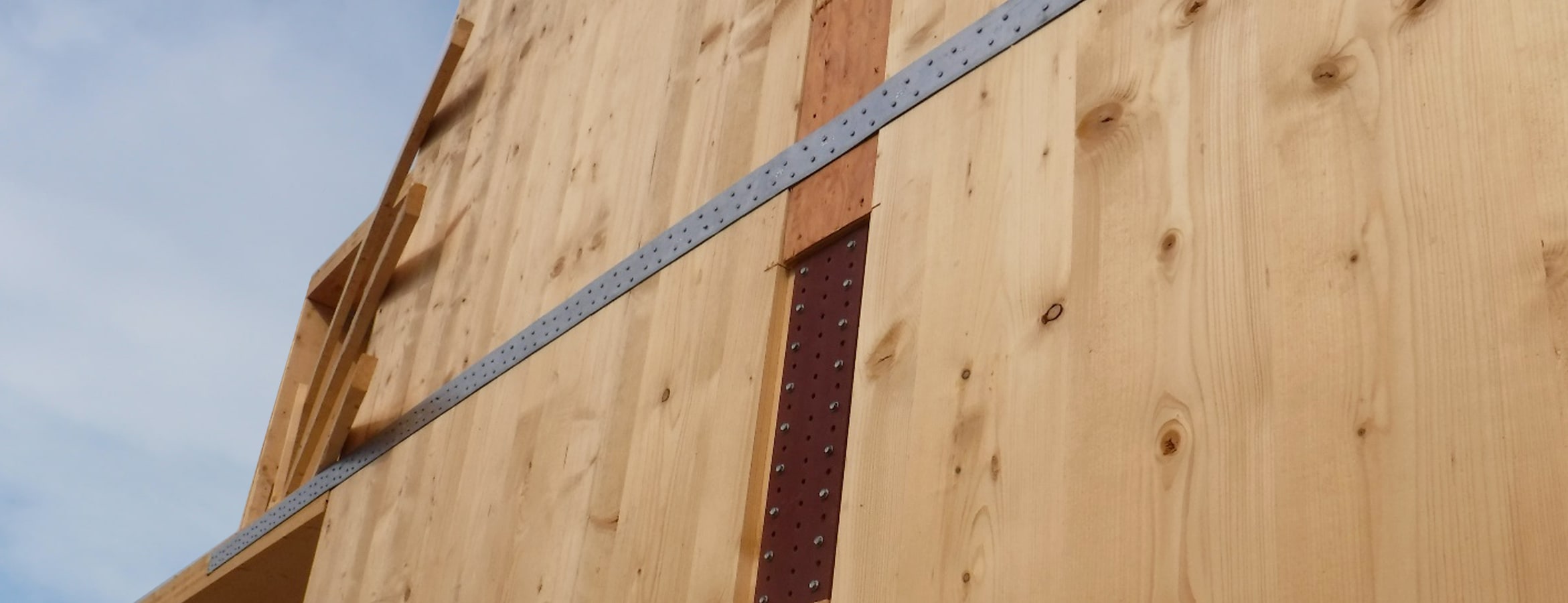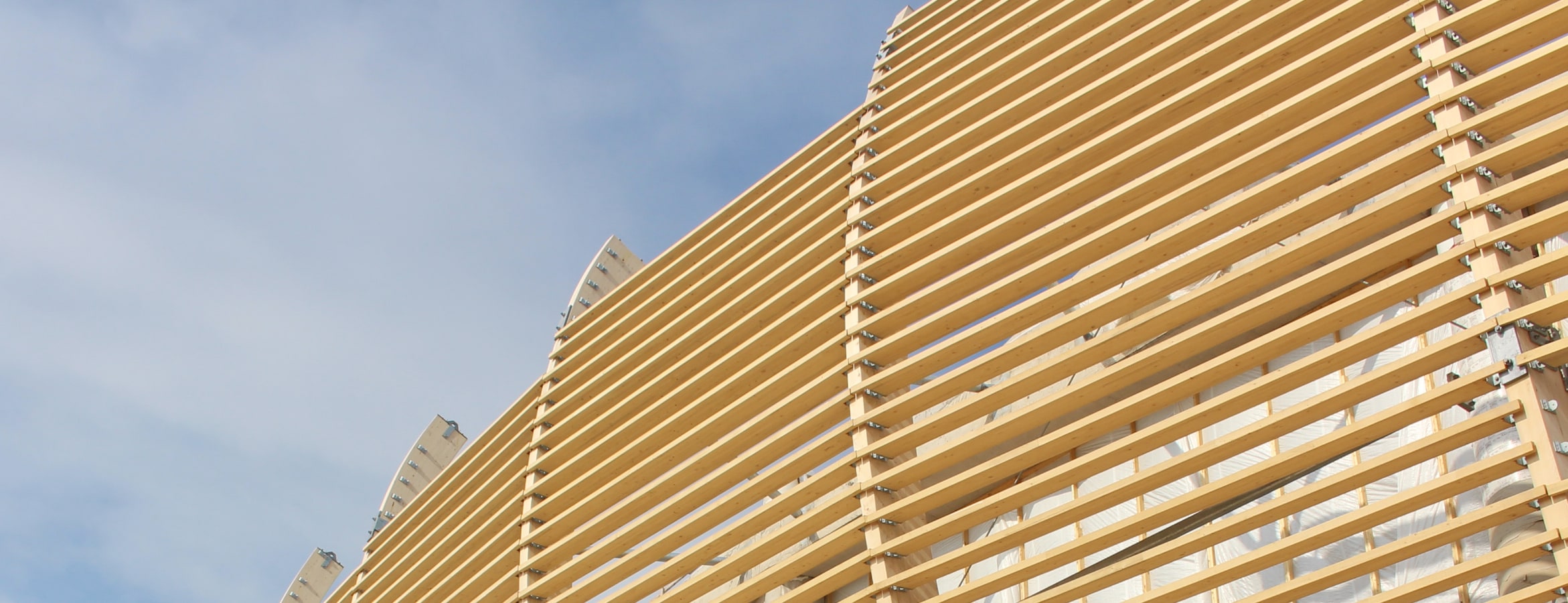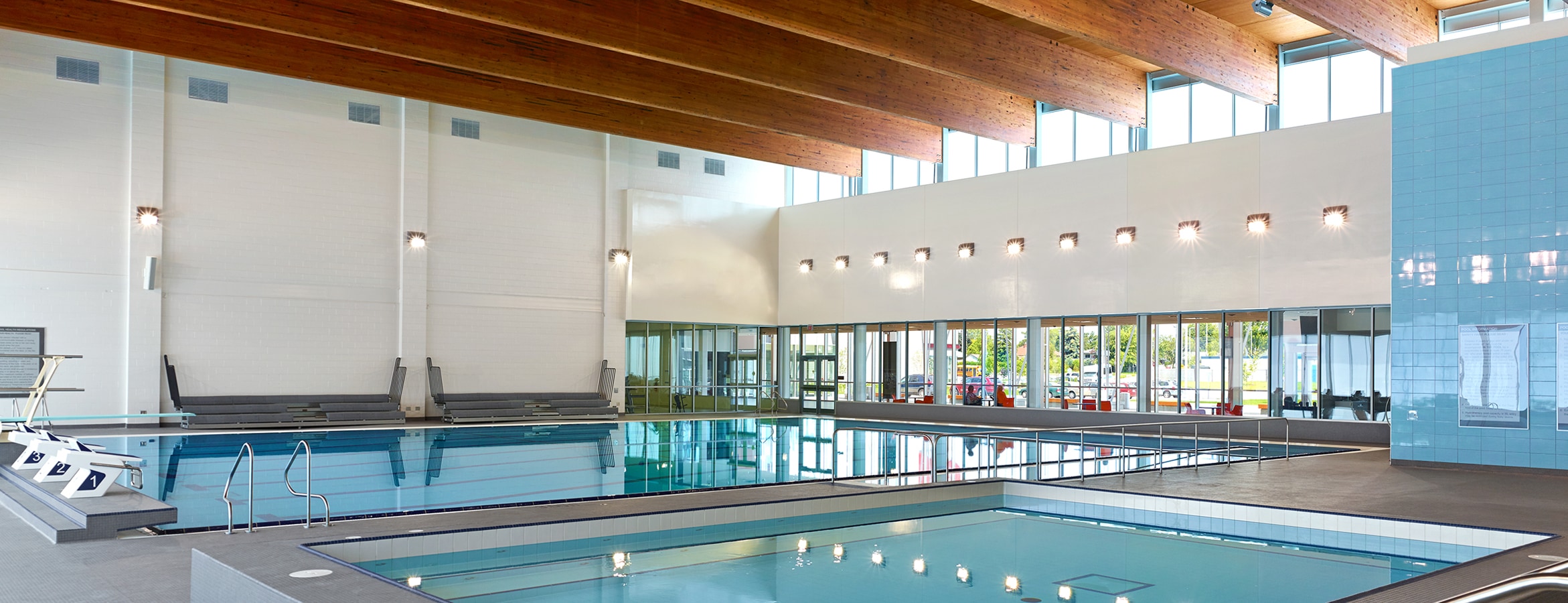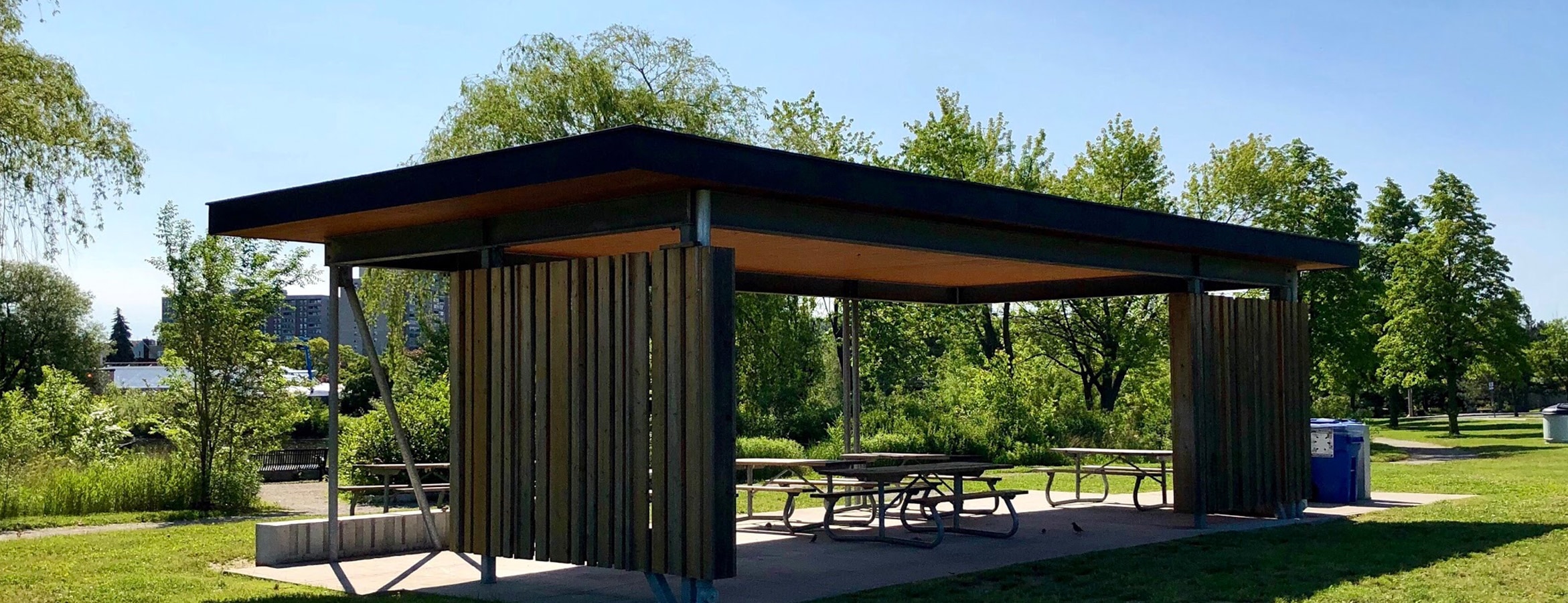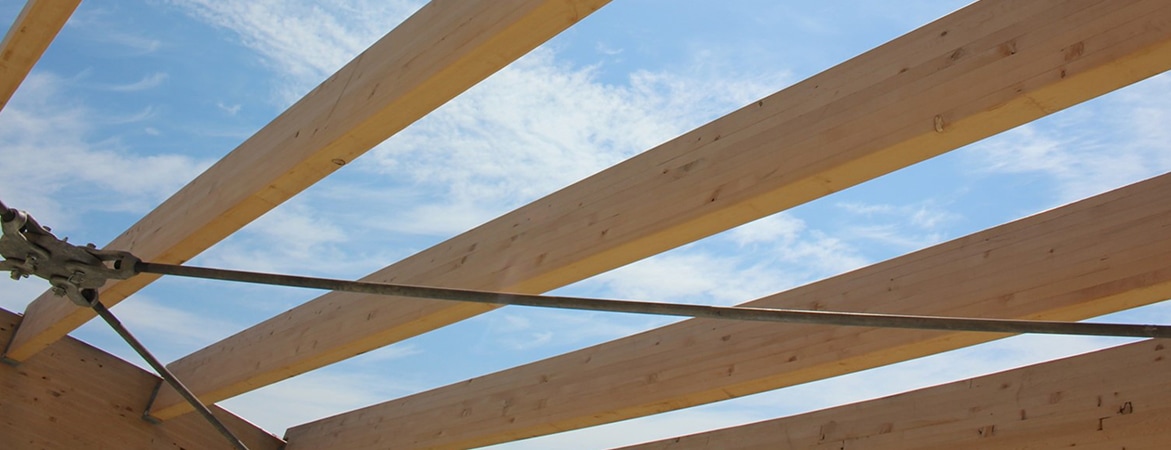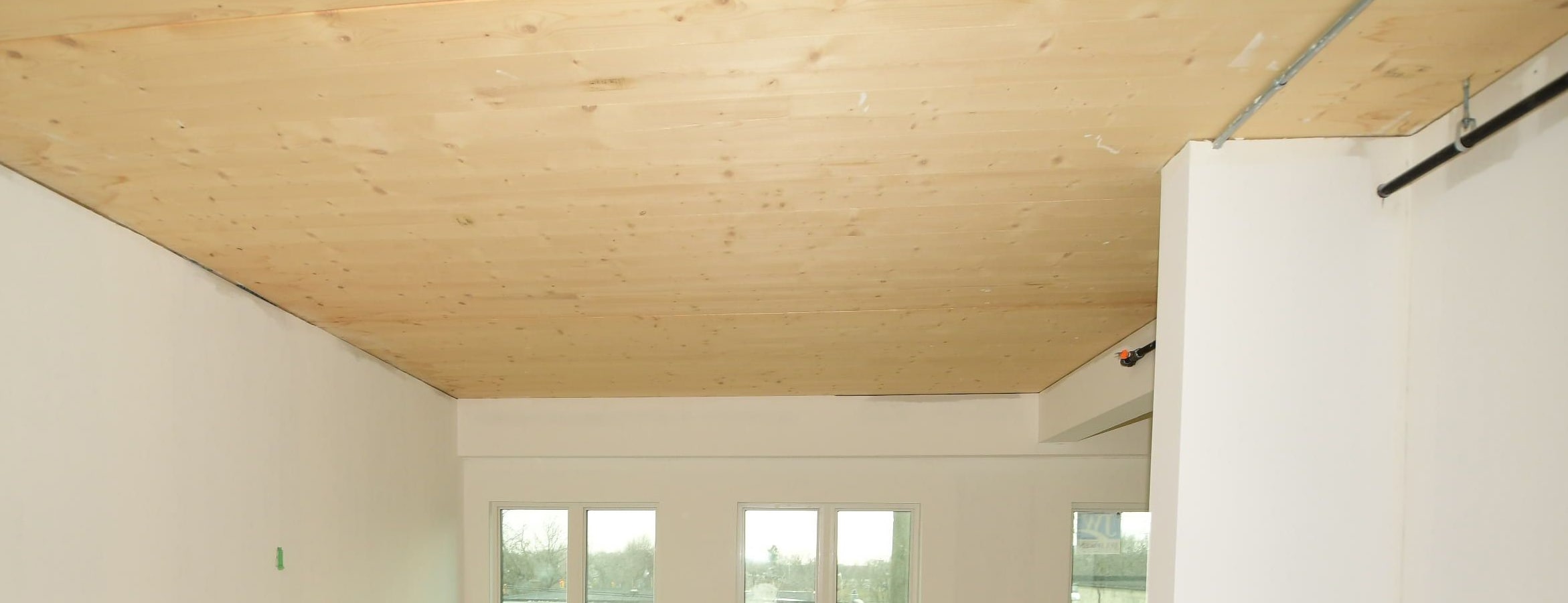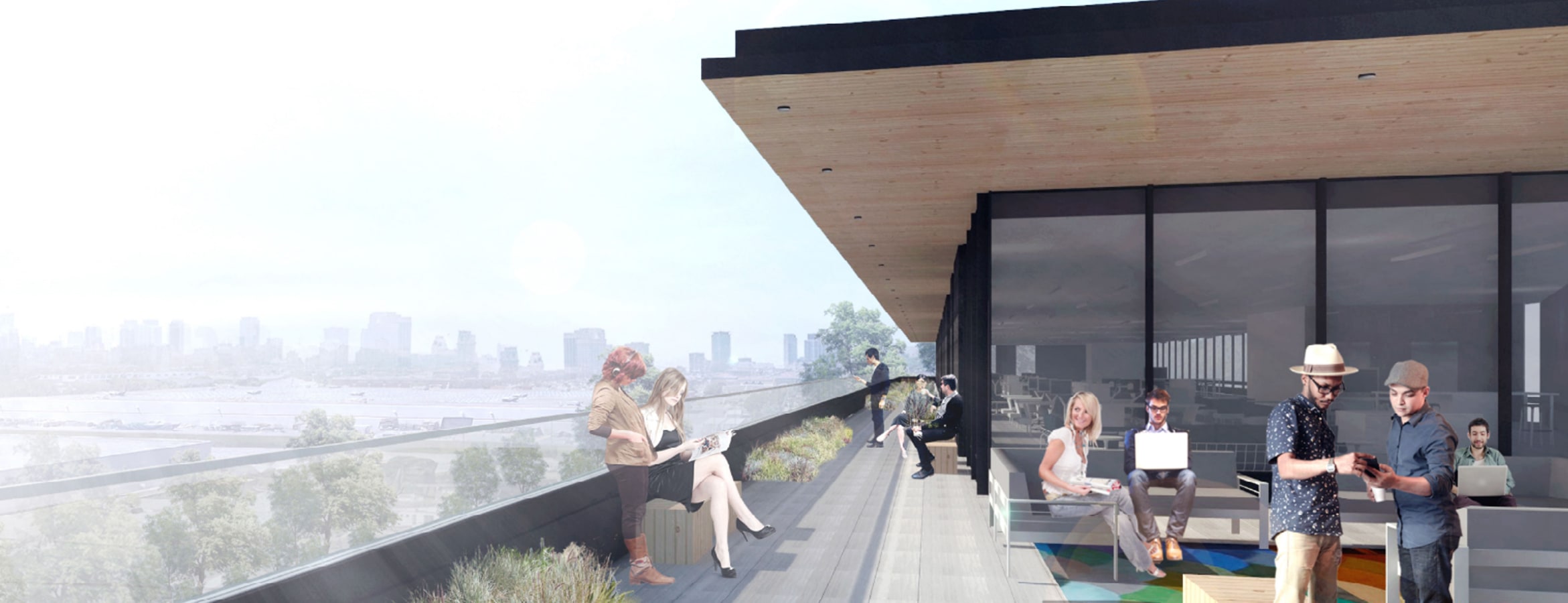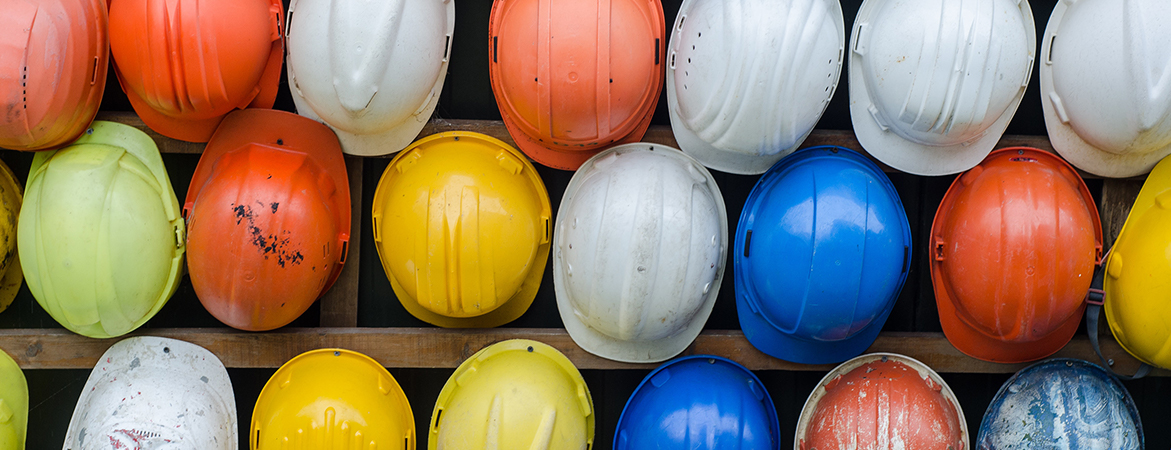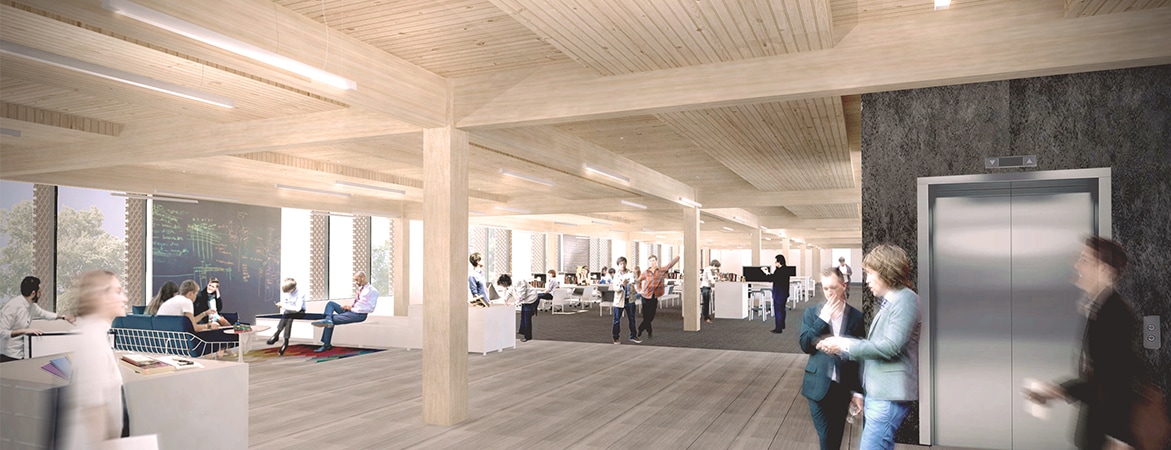To beam or not to beam?
Heavy timber has been used to build tall buildings since the 1800s by assembling horizontal wood beams on vertical wood posts at each storey. Roof or floor decks would be supported by the beams. This assembly came to be known as post-and-beam and was the basis for reinforced concrete and steel buildings. Later on, reinforced concrete structures developed with the innovation of two-way bending slabs and removed the necessity of beams for buildings within a certain column spacing. Two-way bending slabs are concrete floor slabs capable of resisting bending due to gravity loads in both orthogonal in-plane span directions and are therefore supported on columns only (i.e. no need for beams). Architects and engineers continue to develop and utilize two-way bending concrete slabs to reduce building materials, provide a flat underside of slab surface for mechanical systems and to reduce the overall building height. Reducing the structural depth at each storey has the cumulative effect of allowing additional storeys in tall buildings.
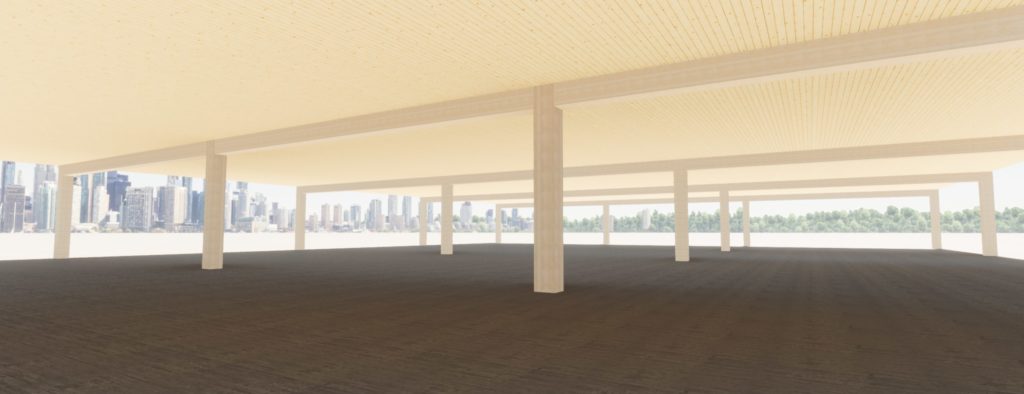
These days mass timber construction is becoming popular internationally for tall buildings such as condominiums, office towers and hotels to name a few. Most of these buildings in North America and Europe are constructed applying the post-and-beam methodology. However, timber technologies have evolved in a way that allows designers to eliminate the need for beams. There is an analogy between two-way bending concrete slabs and cross-laminated timber (CLT). CLT can be designed to resist bending in both span directions.
In mass timber, the structural system consisting of CLT panels supported only on columns (or posts) is known as post-and-plate system or point-supported. The post-and-plate system certainly looks favourable, but it comes with its challenges and limitations. A student residence building in Vancouver, BC is currently the only completed tall mass timber building that applies the post-and-plate system.
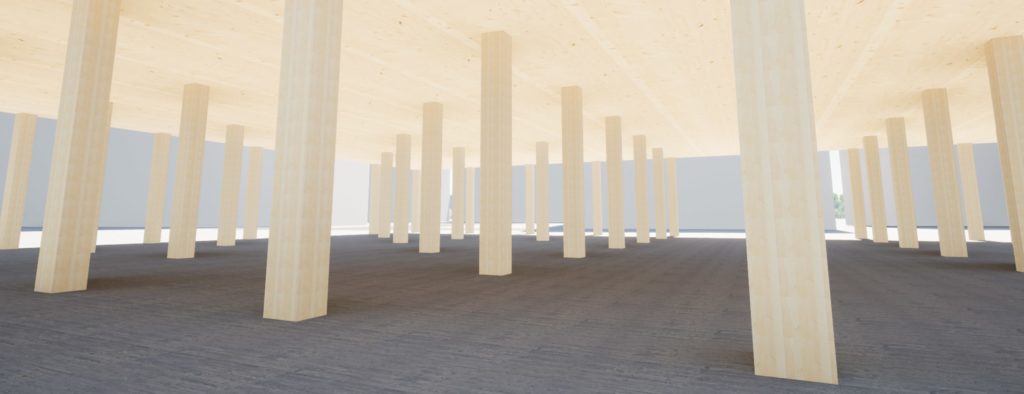
So what are these challenges? What should one consider when deciding whether to use post-and-beam or post-and-plate? The most significant factor is in how far apart the columns are spaced from one another (i.e. column grid spacing).
For post-and-beam systems, the column grid spacing can be as much as the supporting beam span lengths. A system of beams would be efficiently designed to support the mass timber floor or roof panels while maximizing clear space for the occupants with the minimum number of columns. Therefore, post-and-beam system is best suited for buildings with large column grid spacing such as open concept office towers or multi-purpose buildings that require lots of spatial flexibility. There are some drawbacks designers must consider for the post-and-beam system such as:
- Reduced head height taken up by the beam depth;
- Potential conflicts with mechanical or electrical services in ceiling spaces; and
- Shadows projected by the beams if they are left exposed.
For post-and-plate systems, the column grid spacing is notably limited by the maximum width of the CLT the suppliers are capable of producing or that can be transported to site. Unlike concrete, which can be poured on site to cast two-way bending slabs, CLT slabs are pre-fabricated in a certified plant for quality assurance and transported to site. Most plants can produce CLT panels up to approximately 3.5 m (11’-6”) wide. Any wider would even be challenging to securely load onto freight trucks for transport. Therefore, post-and-plate systems may be best suited for buildings that can accommodate narrow column grid spacing such as student residences or hotels. Additional technical challenges for the post-and-plate system includes but are not limited to, the following:
- Sizing CLT panels to provide sufficient resistance in the weaker span and at point supports;
- Detailing connections to adequately support the CLT slabs onto the columns; and
- Requiring experimental tests and/or third-party reviews due to lack of built examples.
Architects, engineers, general contractors and mass timber suppliers should be involved early in the conceptual design phase so that all disciplines can collaborate to optimize the column grid spacing and justify which system is best suited with all factors considered.
There are other types of mass timber systems in addition to post-and-beam and post-and-plate being considered engineers all over the world with many currently being tested in new buildings. The variety of these shows the versatility of mass timber for different types of buildings. Engineers are continuously thinking of ways to overcome the limits of the post-and-plate system to provide additional options for tall buildings in the future.
Moses Structural Engineers mass timber specialists have extensive experience designing and detailing mass timber for many types of uses and occupancies.


